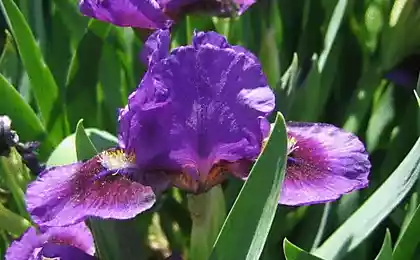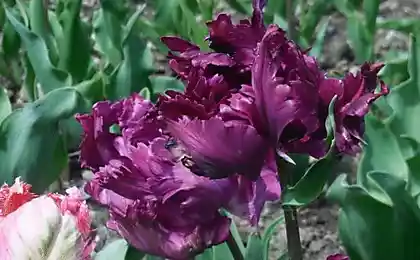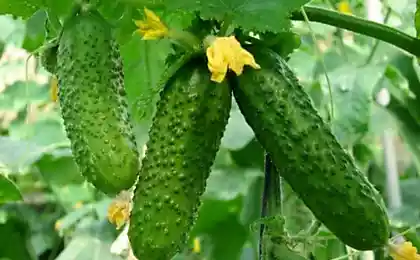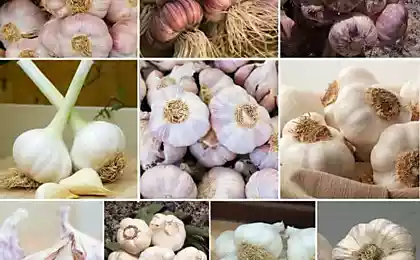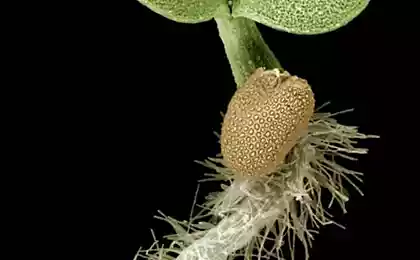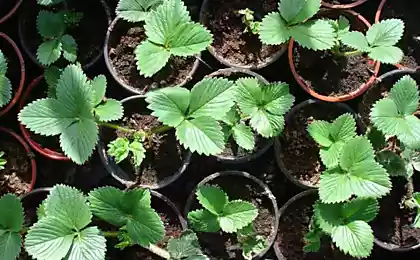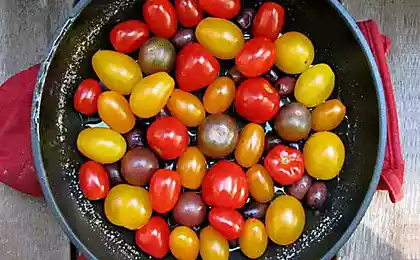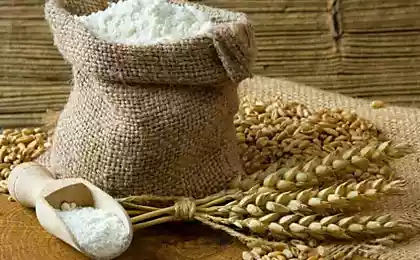622
Eggplant: varieties and cultivation
Fifty million five hundred fifty two thousand one hundred four
The beneficial properties of an eggplant was known in the East about a thousand years ago, where it was called "Vegetable longevity."
Because of the peculiarities of the climate of the original habitat, eggplant is quite demanding in terms of cultivation. To enable aging fruit in different climatic zones were created different varieties of eggplant.
The best varieties of eggplant
The best varieties of eggplant – it is those that can successfully bear fruit for the greatest variance of growing conditions optimal. Since not all regions of the warm period of the year ensure the normal vegetation of plants, you can divide the list in varieties of eggplant for open ground and the varieties of eggplant for greenhouses.
The best varieties of eggplant intended for planting in protected soil, mainly include early maturing varieties with small fruit as the most versatile for growing conditions. These include, for example, the Early Czech, Robin hood and Krasnogolowy. This allows in a limited area of a greenhouse to grow most crops.
In regions with a long warm season you can plant eggplant in open ground. The most popular in this area is the variety Black beauty, characterized by large, up to 200 g, fruit, high yields and good taste. Another popular variety is the Diamond, with a dark-purple fruits weighing up to 200 g, the pulp which has a pleasant taste without bitterness.
To harvest varieties of eggplant include the Albatross. In addition to the important indicators collection per unit area, it has a sufficiently large fruits weighing about 450 g.
Eggplant varieties for open ground
Given that in most regions the climate is much cooler than in areas of original growth of this vegetable, the most preferred for cultivation in the open ground are early varieties of eggplant. A short gestation period allows the successful harvest even in areas with relatively cool climate.
In addition to the above, the most popular varieties include the following:
Forty five million eight hundred seventeen thousand one hundred seventy seven
Varieties of eggplant for the greenhouseBasically, this category includes the varieties and hybrids that require a warmer climate than exists in most regions of our country. At the same time, due to the longer gestation period of such varieties is a more pleasant taste of flesh.
One of the most popular is the hybrid variety of eggplant Marzipan. It belongs to the mid-season species with a gestation period of fruit length of about 120 days. Fruits small, length about 15 cm, but has a very high taste characteristics.
The best varieties of eggplant for the greenhouse include mainly hybrids with the highest consumer indicators of fruits. The following varieties due to the short term aging of fruit can be grown in the open ground, but in greenhouses they give the highest yield.
Of the most popular can be called hybrids of the Purple miracle and the Nutcracker.
A distinctive feature of the first of these is a very stable yield, in the long term provides the best indicator compared to other (even more productive) varieties. The fruit is small, weighing about 130 g, with white flesh and no bitterness.
Second grade has a sufficiently high yield and early maturing. Fruit of medium size, weighing about 250 g, with a pleasant taste without bitterness.
It is separately necessary to stop on a rather unusual varieties of white eggplant. As their name implies, the distinguishing feature of this group is the white color of the rind of the fruit. The best known representatives of this group belongs to the above-mentioned grade Bibo, as well as several other: White Night, the Taste of mushrooms, Swan, Tender, the Pelican, Snowy.
Mostly all sold now varieties of eggplant are fruit flesh without bitterness. In particular, the taste of the above varieties has precisely these characteristics. To avoid spoiling the taste of the fruit collected, it is impossible to prevent their over ripeness in the beds. Most varieties of over ripeness begin to taste bitter.
In addition to optimizing palatability and resistance to negative environmental factors in the process of selection modificeres and appearance of the fruit. In particular, were bred round varieties of aubergines, different in addition to unusual forms of fruit and slightly larger fruit size compared to conventional varieties.
It is also worth noting that the improvement in consumer and technical properties of this culture is a continuous process, where every new variety is created taking into account the advantages and disadvantages of the previous one.
Ninety million nine hundred eighty eight thousand four hundred forty five
Therefore, new varieties of eggplant are superior to most of the indicators of the varieties earlier years of selective breeding. Basically them belong to the hybrid class that combines all the strengths of the parent plants. Among them include hybrid varieties such as the king of the market, the King of the North, Green, Black beauty, Diamond.
Thus, each of these varieties has its advantages and disadvantages, so definitely say what variety of eggplant is better is impossible. To determine what varieties of eggplant are best planted, it is necessary based on the anticipated conditions of cultivation of this culture.
For example, when grown in the open field or unheated greenhouse best suited varieties with low-growing compact Bush and one-time aging of the crop.
Varieties that have a Bush of medium height (from 80 to 150 cm), preferably planted in a heated greenhouse in the spring.
Those varieties, which are tall shrub (over 200 cm), long gestation period and large fruits should be planted in heated winter greenhouses.
Eggplants are widely grown in all areas of our vast country. However, in contrast to carrot or onion purple fruit very much care. Therefore, many prefer to grow eggplants in a greenhouse. There they are protected from cold drafts. Everything else in the greenhouse easier to sustain the right eggplant at ambient temperature. In any case, observance of technology of cultivation of eggplant you are provided with a rich harvest. And especially the cultivation of eggplant we consider in detail in this article.
The cultivation of eggplant in the greenhouse Agricultural cultivation of eggplants, above all, depends on the climate that will exist in plants. In this regard, an important factor in the successful production of a crop is the lack of diseases and pests. To get rid of harmful microorganisms in greenhouses, in the spring before planting the blue ones must be disinfected. Although some experts suggest disinfecting the greenhouse in the fall.
The very design of the greenhouse need to be processed in lime to destroy the larvae of some pests and spores of pathogens, over-wintering in the greenhouse. To do this, dissolve in 10 l of water 400 g of chlorine. Leave for a few hours, drain liquid and spray her all greenhouse design. If a wooden greenhouse, then all its parts must be painted with white lime.
If the soil in the greenhouse, poor or infected with pathogenic microorganisms, will have to completely change the soil. Remote earth is not necessarily to destroy. For the decontamination of soil should be placed into a special stack, and each layer pour in lime. In this condition the land must be stored for 3-4 years.
In place of the old land should be laid new ground. The composition of fresh earth should be such that the beds turned loose, absorbent and contain optimum amounts of nutrients. As a variant: you can take 1 part of sawdust, 3 parts of manure humus and 3 parts peat. Additionally, on each square meter of garden you can make 80 g any chemical fertilizers and a glass of wood ash. After this, the beds should be dug and leveled.
To plant the seedlings in the greenhouse are recommended only when the soil temperature will be +15 degrees.
Before planting, the beds should make a small hole. Each add 1/3 Cup of ash. Mix it with soil, and then watered with a weak solution of potassium permanganate. Before planting be sure to water the eggplant.
On a note
The first few days the eggplant should create a shadow – so they are better accustomed. You can use paper or any covering material.
Planting seedlings is better to make a tape. The distance between each row should be 60 cm please note that the bushes of eggplant spreading, so the distance between each sapling should not be less than 45 cm During the landing should not deepen the plant is more than 2 cm. After planting, cover with soil bows. Seal and again pour plants. Below the soil surface is not formed a hard crust, sprinkle the earth with a layer of peat.
Care when growing eggplant is watering, temperature, fertilizing, protection from pests and diseases.
The main secret of the successful cultivation of eggplant is in strict compliance with the temperature regimes, because the eggplants love the heat. The temperature in the greenhouse is recommended to maintain at the level of 15 degrees at night and 24-38 degrees during the day. The humidity should be 70%. Do not allow raising the temperature in the greenhouse to 35-45 degrees. In such circumstances, will not start up a fruit. The temperature should be adjusted with the doors in the greenhouse. To avoid draughts, doors open alternately that with one, on the other hand.
The cultivation of eggplant in the open field The conditions for growing eggplants in the open ground should be as favorable. A great harvest can be obtained by growing eggplants on a well-heated and wind-protected soils. If your chosen location has no natural protection from drafts and wind, it must be created. Good protection from the wind create a genuine boom in the plantings of corn, beans or peas.
Land for eggplant should be loose and light, and soil to maintain good moisture. In this case, seedlings of eggplant is grown from seed at home, and in early summer, the young seedlings are planted in open ground.
Make each bed no lower than 30 cm In the process of formation of the beds in the ground you should add 1 Cup of ash, a teaspoon urea, 1 tbsp. teaspoon of potassium sulfate, the same amount of superphosphate.
Eggplant welcome organic fertilizer, but fresh manure should be made only in the fall. In the spring, in the garden, you can only add compost or rotted manure.
In the process of forming beds in the fall requires a deep digging the ground and removing the roots of weeds. In the spring I have perekipat garden beds, fertilise and level the soil with a rake. To the tree planting garden beds need to be loosened after each rain.
Tip
Directly before planting the beds should be watered Effekton or sodium HUMATE. This fertilizer will help the seedlings acclimate and go into growth.
In temperate climates, planting in open ground is made after 10 June, when will be the wave of frost. Usually at this time the average temperature is above 15 degrees. However, to plant eggplant in soil before (20 may), if it is possible to install a small hotbed. But summer, even during cold snaps, seedlings of eggplant at night you should cover with tape or a special covering material. Some gardeners believe that the film or covering material left on the entire season, significantly increase the yield of eggplant.
In the open ground eggplants are planted in staggered or ribbons. In the first case, it will be easier to care for plants. In any case, the distance between the bushes must be at least 45 cm.
For the first 14 days after transplantation into the soil eggplant, sick and poorly
Important to know
Eggplants don't like cold water to water the seedlings should be warm, heated by the sun water. However, the next day after watering will have to undertake compulsory tillage of the soil, to avoid the formation of hard crusts.
grow. Therefore, at this time, should be frequently loosened topsoil and limit watering. And when the plants take root, watering should be increased.
Eggplants, like many other plants require complete feeding. The first feeding is organized for 17-20 days after planting. The first time plants can be fed with a solution of slurry. The second feeding should be held 20 days after the first. This is where the entrance will go to fertilizers. On 10 l of water it should take 30 g of the potassium salt, 30 g of urea and 80 g of superphosphate. The last feeding falls in the period of fruiting of eggplant. To prepare the solution in 10 liters of water dissolve 80 g of urea and superphosphate. After each feeding of eggplant seedlings should be watered with clean water to avoid burns.
When the plants appear a lot of side shoots, some of them are removed. On the main stem above the fork and remove only those shoots that do not ensued fruits, and lower fork completely remove all side shoots.
After fruit eggplant usually Mature at 35-40 days. Ripe vegetables should be cut with a knife or shears, along with the stem. Even if eggplant is ripe, the fruit should be removed before the frost.
Problems and diseases of eggplant Attention!
Diseased plants should immediately be removed from the beds, and the soil is dry, loosen and sprinkle with wood ashes.
One of the most common diseases affecting eggplant is black leg. The fungus causes a constriction and darkening of the root neck.
Eggplant grown in open ground, often affected by stolbur, while greenhouse plants are rare with this disease. With the defeat of plants by the stolbur, eggplant leaves have red-purple stems expand and start easy to break. The flowers begin to wilt, and the leaves become corrugated. The responses to stolbur include: removal of weeds around the beds, and processing plants of complex preparation "Aktellik".
In addition to the stolbur and black legs eggplant may be damaged by gray mold, late blight, tobacco mosaic. And pest for eggplants threat: aphids, spider mites, slugs. Against these insects works well safe for human drug "Arrow".
In addition, the damage to the eggplant to bring the mole crickets, whiteflies, and even Colorado potato beetles. In this case it is important to note that when growing eggplants in greenhouses to combat pests is not to spray the plants with pesticides. In this situation against whiteflies, you can use the drugs "Iskra-bio" or "Fitoverm", and also to place glue traps. But the Colorado beetles have to collect manually.
When growing eggplants in the open ground plants are allowed to spray once "Koridoram" (against whiteflies) and "Sonnet" (against Colorado beetle). To combat the mole cricket will have to find its burrow and pour back the water. Sometimes suggest you drop into the hole a little sunflower oil and then cover with water. Oil will clog the Airways Medvedkov, and it will die or get out, where it can be caught and destroyed. published
Author: Svetlana Koltsova
Source: krugznaniy.ru/article/sorta-baklazhanov/
The beneficial properties of an eggplant was known in the East about a thousand years ago, where it was called "Vegetable longevity."
Because of the peculiarities of the climate of the original habitat, eggplant is quite demanding in terms of cultivation. To enable aging fruit in different climatic zones were created different varieties of eggplant.
The best varieties of eggplant
The best varieties of eggplant – it is those that can successfully bear fruit for the greatest variance of growing conditions optimal. Since not all regions of the warm period of the year ensure the normal vegetation of plants, you can divide the list in varieties of eggplant for open ground and the varieties of eggplant for greenhouses.
The best varieties of eggplant intended for planting in protected soil, mainly include early maturing varieties with small fruit as the most versatile for growing conditions. These include, for example, the Early Czech, Robin hood and Krasnogolowy. This allows in a limited area of a greenhouse to grow most crops.
In regions with a long warm season you can plant eggplant in open ground. The most popular in this area is the variety Black beauty, characterized by large, up to 200 g, fruit, high yields and good taste. Another popular variety is the Diamond, with a dark-purple fruits weighing up to 200 g, the pulp which has a pleasant taste without bitterness.
To harvest varieties of eggplant include the Albatross. In addition to the important indicators collection per unit area, it has a sufficiently large fruits weighing about 450 g.
Eggplant varieties for open ground
Given that in most regions the climate is much cooler than in areas of original growth of this vegetable, the most preferred for cultivation in the open ground are early varieties of eggplant. A short gestation period allows the successful harvest even in areas with relatively cool climate.
In addition to the above, the most popular varieties include the following:
- The king in the North is one of the most cold-hardy hybrid varieties. After brief ripening period (100 days) this variety produces fairly large fruits up to 30 cm.
- Also popular early maturing variety Valentines, wherein a uniform size of the fruit (about 5 to 25 cm), high fructification and a good resistance to disease.
- This can be attributed to a sort of Faith, having pear-shaped fruits weighing about 150 g is suitability for long-term storage and high resistance to diseases.
- Hybrid variety Bourgeois belongs to the tall varieties of eggplant early maturity. The growing period is about 110 days. Distinctive features is the significant height of the plant, its high resistance to negative manifestations of the external environment and diseases, as well as unusual poederooyen form of the fruit. Their weight is generally about 500 g. it Has high taste qualities, the harvest will continuously be stored.
- Hybrid variety eggplant Bibo has one of the highest yields. Having a large fruit weighing up to 500 g, it provides a very rapid aging of the crop, as well as high resistance to diseases.
Forty five million eight hundred seventeen thousand one hundred seventy seven
Varieties of eggplant for the greenhouseBasically, this category includes the varieties and hybrids that require a warmer climate than exists in most regions of our country. At the same time, due to the longer gestation period of such varieties is a more pleasant taste of flesh.
One of the most popular is the hybrid variety of eggplant Marzipan. It belongs to the mid-season species with a gestation period of fruit length of about 120 days. Fruits small, length about 15 cm, but has a very high taste characteristics.
The best varieties of eggplant for the greenhouse include mainly hybrids with the highest consumer indicators of fruits. The following varieties due to the short term aging of fruit can be grown in the open ground, but in greenhouses they give the highest yield.
Of the most popular can be called hybrids of the Purple miracle and the Nutcracker.
A distinctive feature of the first of these is a very stable yield, in the long term provides the best indicator compared to other (even more productive) varieties. The fruit is small, weighing about 130 g, with white flesh and no bitterness.
Second grade has a sufficiently high yield and early maturing. Fruit of medium size, weighing about 250 g, with a pleasant taste without bitterness.
It is separately necessary to stop on a rather unusual varieties of white eggplant. As their name implies, the distinguishing feature of this group is the white color of the rind of the fruit. The best known representatives of this group belongs to the above-mentioned grade Bibo, as well as several other: White Night, the Taste of mushrooms, Swan, Tender, the Pelican, Snowy.
Mostly all sold now varieties of eggplant are fruit flesh without bitterness. In particular, the taste of the above varieties has precisely these characteristics. To avoid spoiling the taste of the fruit collected, it is impossible to prevent their over ripeness in the beds. Most varieties of over ripeness begin to taste bitter.
In addition to optimizing palatability and resistance to negative environmental factors in the process of selection modificeres and appearance of the fruit. In particular, were bred round varieties of aubergines, different in addition to unusual forms of fruit and slightly larger fruit size compared to conventional varieties.
It is also worth noting that the improvement in consumer and technical properties of this culture is a continuous process, where every new variety is created taking into account the advantages and disadvantages of the previous one.
Ninety million nine hundred eighty eight thousand four hundred forty five
Therefore, new varieties of eggplant are superior to most of the indicators of the varieties earlier years of selective breeding. Basically them belong to the hybrid class that combines all the strengths of the parent plants. Among them include hybrid varieties such as the king of the market, the King of the North, Green, Black beauty, Diamond.
Thus, each of these varieties has its advantages and disadvantages, so definitely say what variety of eggplant is better is impossible. To determine what varieties of eggplant are best planted, it is necessary based on the anticipated conditions of cultivation of this culture.
For example, when grown in the open field or unheated greenhouse best suited varieties with low-growing compact Bush and one-time aging of the crop.
Varieties that have a Bush of medium height (from 80 to 150 cm), preferably planted in a heated greenhouse in the spring.
Those varieties, which are tall shrub (over 200 cm), long gestation period and large fruits should be planted in heated winter greenhouses.
Eggplants are widely grown in all areas of our vast country. However, in contrast to carrot or onion purple fruit very much care. Therefore, many prefer to grow eggplants in a greenhouse. There they are protected from cold drafts. Everything else in the greenhouse easier to sustain the right eggplant at ambient temperature. In any case, observance of technology of cultivation of eggplant you are provided with a rich harvest. And especially the cultivation of eggplant we consider in detail in this article.
The cultivation of eggplant in the greenhouse Agricultural cultivation of eggplants, above all, depends on the climate that will exist in plants. In this regard, an important factor in the successful production of a crop is the lack of diseases and pests. To get rid of harmful microorganisms in greenhouses, in the spring before planting the blue ones must be disinfected. Although some experts suggest disinfecting the greenhouse in the fall.
The very design of the greenhouse need to be processed in lime to destroy the larvae of some pests and spores of pathogens, over-wintering in the greenhouse. To do this, dissolve in 10 l of water 400 g of chlorine. Leave for a few hours, drain liquid and spray her all greenhouse design. If a wooden greenhouse, then all its parts must be painted with white lime.
If the soil in the greenhouse, poor or infected with pathogenic microorganisms, will have to completely change the soil. Remote earth is not necessarily to destroy. For the decontamination of soil should be placed into a special stack, and each layer pour in lime. In this condition the land must be stored for 3-4 years.
In place of the old land should be laid new ground. The composition of fresh earth should be such that the beds turned loose, absorbent and contain optimum amounts of nutrients. As a variant: you can take 1 part of sawdust, 3 parts of manure humus and 3 parts peat. Additionally, on each square meter of garden you can make 80 g any chemical fertilizers and a glass of wood ash. After this, the beds should be dug and leveled.
To plant the seedlings in the greenhouse are recommended only when the soil temperature will be +15 degrees.
Before planting, the beds should make a small hole. Each add 1/3 Cup of ash. Mix it with soil, and then watered with a weak solution of potassium permanganate. Before planting be sure to water the eggplant.
On a note
The first few days the eggplant should create a shadow – so they are better accustomed. You can use paper or any covering material.
Planting seedlings is better to make a tape. The distance between each row should be 60 cm please note that the bushes of eggplant spreading, so the distance between each sapling should not be less than 45 cm During the landing should not deepen the plant is more than 2 cm. After planting, cover with soil bows. Seal and again pour plants. Below the soil surface is not formed a hard crust, sprinkle the earth with a layer of peat.
Care when growing eggplant is watering, temperature, fertilizing, protection from pests and diseases.
The main secret of the successful cultivation of eggplant is in strict compliance with the temperature regimes, because the eggplants love the heat. The temperature in the greenhouse is recommended to maintain at the level of 15 degrees at night and 24-38 degrees during the day. The humidity should be 70%. Do not allow raising the temperature in the greenhouse to 35-45 degrees. In such circumstances, will not start up a fruit. The temperature should be adjusted with the doors in the greenhouse. To avoid draughts, doors open alternately that with one, on the other hand.
The cultivation of eggplant in the open field The conditions for growing eggplants in the open ground should be as favorable. A great harvest can be obtained by growing eggplants on a well-heated and wind-protected soils. If your chosen location has no natural protection from drafts and wind, it must be created. Good protection from the wind create a genuine boom in the plantings of corn, beans or peas.
Land for eggplant should be loose and light, and soil to maintain good moisture. In this case, seedlings of eggplant is grown from seed at home, and in early summer, the young seedlings are planted in open ground.
Make each bed no lower than 30 cm In the process of formation of the beds in the ground you should add 1 Cup of ash, a teaspoon urea, 1 tbsp. teaspoon of potassium sulfate, the same amount of superphosphate.
Eggplant welcome organic fertilizer, but fresh manure should be made only in the fall. In the spring, in the garden, you can only add compost or rotted manure.
In the process of forming beds in the fall requires a deep digging the ground and removing the roots of weeds. In the spring I have perekipat garden beds, fertilise and level the soil with a rake. To the tree planting garden beds need to be loosened after each rain.
Tip
Directly before planting the beds should be watered Effekton or sodium HUMATE. This fertilizer will help the seedlings acclimate and go into growth.
In temperate climates, planting in open ground is made after 10 June, when will be the wave of frost. Usually at this time the average temperature is above 15 degrees. However, to plant eggplant in soil before (20 may), if it is possible to install a small hotbed. But summer, even during cold snaps, seedlings of eggplant at night you should cover with tape or a special covering material. Some gardeners believe that the film or covering material left on the entire season, significantly increase the yield of eggplant.
In the open ground eggplants are planted in staggered or ribbons. In the first case, it will be easier to care for plants. In any case, the distance between the bushes must be at least 45 cm.
For the first 14 days after transplantation into the soil eggplant, sick and poorly
Important to know
Eggplants don't like cold water to water the seedlings should be warm, heated by the sun water. However, the next day after watering will have to undertake compulsory tillage of the soil, to avoid the formation of hard crusts.
grow. Therefore, at this time, should be frequently loosened topsoil and limit watering. And when the plants take root, watering should be increased.
Eggplants, like many other plants require complete feeding. The first feeding is organized for 17-20 days after planting. The first time plants can be fed with a solution of slurry. The second feeding should be held 20 days after the first. This is where the entrance will go to fertilizers. On 10 l of water it should take 30 g of the potassium salt, 30 g of urea and 80 g of superphosphate. The last feeding falls in the period of fruiting of eggplant. To prepare the solution in 10 liters of water dissolve 80 g of urea and superphosphate. After each feeding of eggplant seedlings should be watered with clean water to avoid burns.
When the plants appear a lot of side shoots, some of them are removed. On the main stem above the fork and remove only those shoots that do not ensued fruits, and lower fork completely remove all side shoots.
After fruit eggplant usually Mature at 35-40 days. Ripe vegetables should be cut with a knife or shears, along with the stem. Even if eggplant is ripe, the fruit should be removed before the frost.
Problems and diseases of eggplant Attention!
Diseased plants should immediately be removed from the beds, and the soil is dry, loosen and sprinkle with wood ashes.
One of the most common diseases affecting eggplant is black leg. The fungus causes a constriction and darkening of the root neck.
Eggplant grown in open ground, often affected by stolbur, while greenhouse plants are rare with this disease. With the defeat of plants by the stolbur, eggplant leaves have red-purple stems expand and start easy to break. The flowers begin to wilt, and the leaves become corrugated. The responses to stolbur include: removal of weeds around the beds, and processing plants of complex preparation "Aktellik".
In addition to the stolbur and black legs eggplant may be damaged by gray mold, late blight, tobacco mosaic. And pest for eggplants threat: aphids, spider mites, slugs. Against these insects works well safe for human drug "Arrow".
In addition, the damage to the eggplant to bring the mole crickets, whiteflies, and even Colorado potato beetles. In this case it is important to note that when growing eggplants in greenhouses to combat pests is not to spray the plants with pesticides. In this situation against whiteflies, you can use the drugs "Iskra-bio" or "Fitoverm", and also to place glue traps. But the Colorado beetles have to collect manually.
When growing eggplants in the open ground plants are allowed to spray once "Koridoram" (against whiteflies) and "Sonnet" (against Colorado beetle). To combat the mole cricket will have to find its burrow and pour back the water. Sometimes suggest you drop into the hole a little sunflower oil and then cover with water. Oil will clog the Airways Medvedkov, and it will die or get out, where it can be caught and destroyed. published
Author: Svetlana Koltsova
Source: krugznaniy.ru/article/sorta-baklazhanov/
The value of the land
Zheng Fujun: If You don't learn to manage their disease, then the disease will control You
